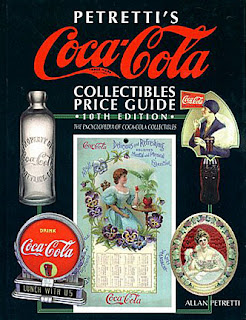
ANSWER: Because Coca Cola has been around for over 130 years, there’s a huge number of collectible items on the market. And with the launching of online auction and sales sites, the number has steadily grown. But this means there’s an even greater chance that some of these items are reproductions or outright fakes.

John Pemberton, a pharmacist, created Coke syrup in 1886. He convinced a nearby soda fountain in Atlanta to add carbonated water and give it a try. At first the drink was only a modest success, Pemberton and his partner, Frank Robertson, came up with the name Coca-Cola, scripted in a flowing hand by Robertson. That, plus a series of hand-painted banners encouraged passers-by to "Drink Coca-Cola," was the beginning of a successful marketing campaign that lives on to this day.


Even though Pemberton and Robertson founded the company in the late 1890s, collecting Coca-Cola advertising items---beautiful models printed on trays, calendars, signs, and even tiny pocket mirrors—didn’t begin to get popular until the early 20th century. Coca-Cola print advertising onto just about anything and gave these items out at state fairs and schools in towns all across the country.

The overwhelming number of reproductions in this category makes it imperative that collectors learn as much as possible Coca-Cola items. Beginners can learn a lot from price guides and online forums.

Reproduction serving trays from the 1930s have a note on the back saying so. The original had sharper lithography with a dark-colored back while the reproduction trays had less-than-sharp lithography and a light colored back.

This change was great for collectors who want to date Coca-Cola items as being before 1940 but can lead to many problems for dating items made after 1940. Naturally many novice collectors don’t know the difference and end up paying way too much for items produced more recently.
It’s a good idea for beginning collectors to do research before making an expensive purchase and to consult more than one source for information.
To read more articles on antiques, please visit the Antiques Articles section of my Web site. And to stay up to the minute on antiques and collectibles, please join the over 30,000 readers by following my free online magazine, #TheAntiquesAlmanac. Learn more about the "Pottery Through the Ages" in the 2022 Winter Edition, online now. And to read daily posts about unique objects from the past and their histories, like the #Antiques and More Collection on Facebook.






